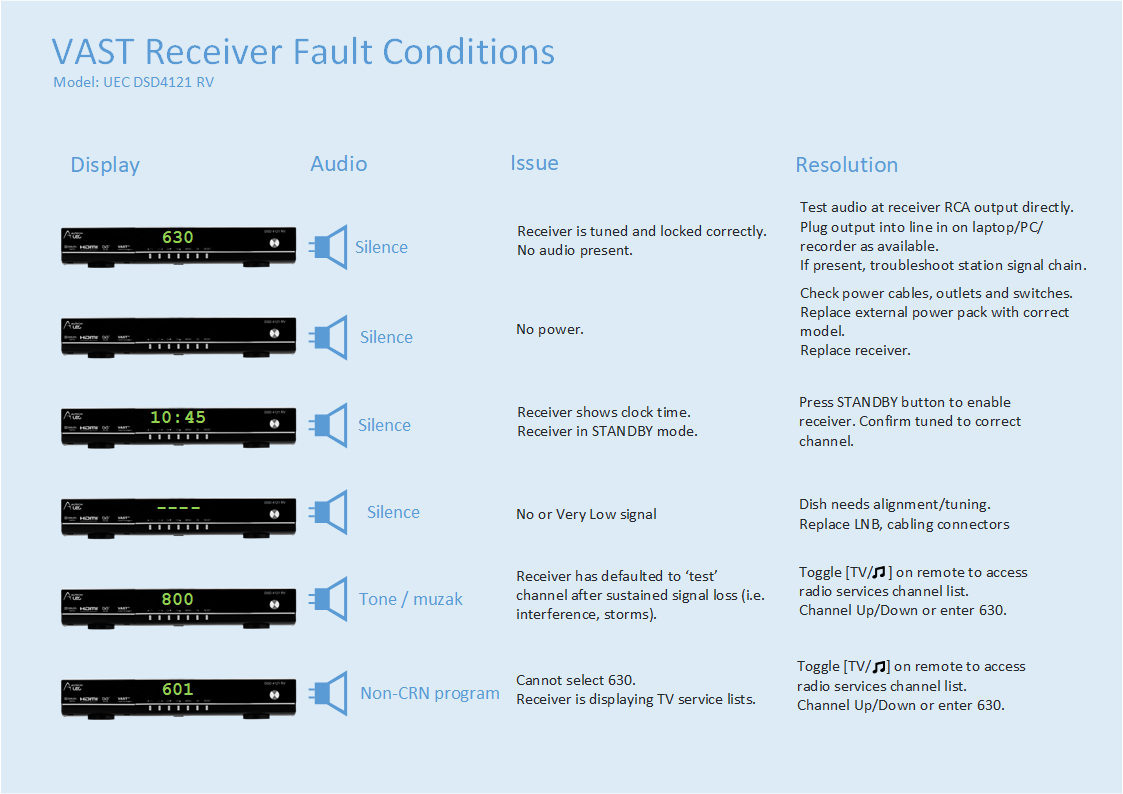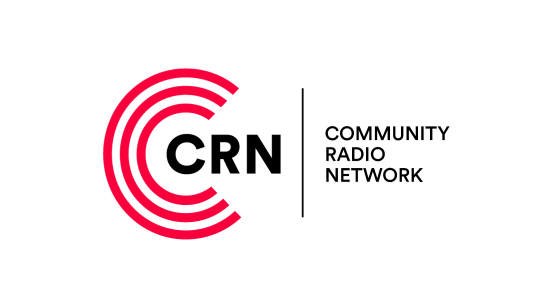Using the VAST Satellite System
Community Radio Network programming is distributed to stations for both live-to-air and on-demand use, or a combination depending on station preference.
The 24/7/365 satellite audio service has been a mainstay platform operated by the CBAA. The service provides a continuous audio schedule for stations requiring longer tracts of overnight or out-of-hours programming, or for those wishing to take programs which are only available live - i.e. breakfast programming, talk-back and requests shows, and some news and current affairs programs.
What is the VAST satellite system?
Satellite services are provided over the VAST satellite system - the same system used to provide Free-to-Air television and radio services in many locations around Australia.
The widespread use of the VAST system means equipment is cheap and and local installation and maintenance support is readily available. Local TV Antenna installers are generally familiar with the system and carry all required components and installation knoweldge.
What is needed to access the VAST satellite system?
Most typical stations are able to acquire and install the following for between $800 and $1,200, allowing some variability in installation costs depending on layout of the station and how the equipment will be integrated with station systems.
We recommend stations source quotes from a couple of local suppliers. This cuts down on delivery costs and allows stations to build a relationship with a local operator/technician for future support and maintenance.
A good local installer will be able to supply and install the following items:
- Satellite Dish and Mountings - The system requires a "Ku-Band" external satellite dish. Size improves signal availability, and a technician/installer would be able to recommend what size dish is required in your location. Typically a 90cm dish will be recommended.
- Low Noise Block (LNB) with a Local Oscillator (L.O.) frequency of 10.7Ghz - This unit sits at the focal point of the satellite dish. Typically supplied as part of a dish package.
- Digital VAST receiver - Altech UEC DSD4121RV or Altech UEC DSD4921RV.
- Coaxial cabling - Run between roof-mounted dish to equipment room. Cost dependent on your station’s location, building structure and equipment arrangement.
Other
- Audio integration - The Altech UEC receivers output audio on unbalanced RCA connectors. The station may need to employ a balancing amplifier, additional cabling to integrate with station mixers, source selectors, automation systems etc.
How do you set up a satellite receiver?
Assuming the dish is correctly aimed, by default the satellite reciever should lock onto a signal and beginning scanning for available services.
If troubleshooting is required the following values may be of use to your installer:
- System type: OPTUS VAST satellite platform
- Receiver type: UEC DSD 4121 RV superseded by the Altech UEC DSD4921RV
- Satellite: OPTUS C1/D3 @ 156 degrees East
- Transponder: Transponder 9, 12647Mhz, Vertical
- FEC: 3/5
- Symbol rate: 30,000
- Service channel: Radio services, channel 630 (CRN1) / 631 (CRN2)
What are some common maintenance issues to look out for?
It is recommended to have your dish aligned and cabling inspected every 12 months.
Wind, rain, UV and weather can knock a dish out of alignment or degrade parts over time.
Vegetation growth over time may block a clear view to the sky. Insects and animals can damage, or nest in, on and around dish equipment which can either block a clear view to the sky or cause damage to components.
Stations should perodically check signal levels reported by the receiver signal detection page. A well-tuned and maintained system should have no problem obtaining 100% signal level and quality on a clear day.
How to fix various faults

A guide to the programs currently being broadcast/distributed via the CBAA's Community Radio Network to community radio stations all over Australia.
